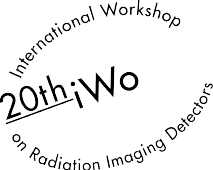Speaker
Description
Analysis of the spatial distribution of elements in the heritage objects, using X-ray fluorescence (XRF) spectroscopy, has become a very important support for conservators in recent years. Elemental mapping offers possibility to study spatial distributions of pigments on the surface of artworks and in the hidden painting layers.
In this work we present progress in the design and performance of a full-field XRF imaging system being developed in collaboration between the Faculty of Physics and Applied Computer Science of the AGH University of Science and Technology and the Laboratory of Analysis and Non-Destructive Investigation of Heritage Objects of the National Museum in Krakow. Compared to commercially available scanning macro-XRF systems using detectors with no position sensitivity, the full-field XRF technique is based on a pinhole camera and a large area position-sensitive and energy dispersive detector. Thus, XRF radiation from large area of an investigated object is simultaneously projected on the detector and such a technique has a number of advantages: (i) it offers shorter measurement times, (ii) the pinhole camera can be adjusted to optimise the measurement procedure, making a compromise the spatial resolution and the measurement time, (iii) fast moving measuring head is eliminated, which is an important aspect for safety of the investigated objects, (iv) the infinite depth of field of the pinhole camera allows one to investigate non-flat objects.
Our system is equipped with two Varian (Varex) VF-50J low power air-cooled X-ray tubes and employs 10 cm by 10 cm Gas Electron Multiplier (GEM) detector assembled with custom designed readout and data acquisition system based on Application Specific Integrated Circuit [1]. Moderate energy resolution of GEM detectors limits elemental selectivity of the system, however, by optimization of the front-end electronics and detector readout significant improvement of the energy resolution has been achieved compared to typical values reported in the literature [2].
Performance of the imaging system and results of elemental mapping obtained with the developed apparatus are presented. The imaging measurements have been performed on several phantoms, painted with different pigment compositions. Selected imaging results for non-flat objects are also presented and discussed.
References
[1] W. Dąbrowski, T. Fiutowski, P. Frączek, S. Koperny, M. Lankosz, A. Mendys, B. Mindur, K. Świentek, P. Wiącek, P.M. Wróbel, Application of GEM-based detectors in full-field XRF imaging, JINST 11, 2016, C12025.
[2] T. Fiutowski, S. Koperny, B. Łach, B. Mindur, K. Świentek, P. Wiącek, W. Dąbrowski, ARTROC - a readout ASIC for GEM-based full-field XRF imaging system, JINST 12, 2017, C12016
Acknowledgments
The authors would like to acknowledge The National Centre for Research and Development for financial support within Applied Research Programme (project no. PBS3/A9/29/2015).
